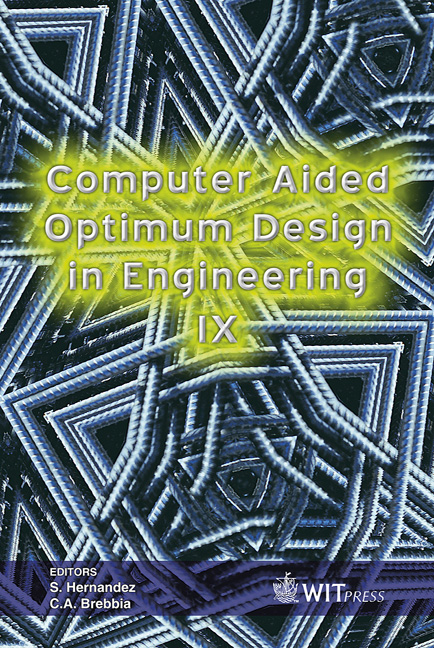Shape Optimization: An Analytical Approach
Price
Free (open access)
Transaction
Volume
80
Pages
10
Published
2005
Size
1,018 kb
Paper DOI
10.2495/OP050141
Copyright
WIT Press
Author(s)
C. Mattheck, M. Scherrer, K. Bethge & I. Tesari
Abstract
The scientific field of biomechanics deals with the statics and dynamics of biological load carriers and the transfer of biological optimization strategies to technical applications. By observation of biological load carriers in nature a fundamental design rule could be found called \“the axiom of uniform stress”, which basically says that in the temporal average with a certain load there are neither high local stresses nor underloaded areas in a biological load carrier. Through load-controlled growth the load carrier develops material in areas with high stress as in areas with low stress there is no growth and hence no material. From this a shape optimization is obtained which is able to prevent fatigue failure. The adaptive growth of biological load carriers is simulated by the CAOMethod (Computer Aided Optimization) and the FEM. With the help of the CAO-Method a parameter study for the optimization of shoulder fillets was made from which a geometrical characterization of the optimized fillet shapes was derived. From that new ways for shape optimization were developed which offer design rules using alternative fillet shapes and a better understanding of the effects caused by stress concentrations was obtained. Due to this knowledge a new and efficient optimization method was developed which offers a fast and simple way to construct optimized fillet shapes. This method can be expressed analytically, so thus does not require much calculating power and was verified with several examples. Keywords: shape optimization, biomechanics, stress concentration. 1 Introduction Notch stresses cause many failures in engineering components, because of a stress concentration effect located at the notch. In order to get a high fatigue resistance of the component, it is essential to lower these stresses. This is
Keywords
shape optimization, biomechanics, stress concentration.





